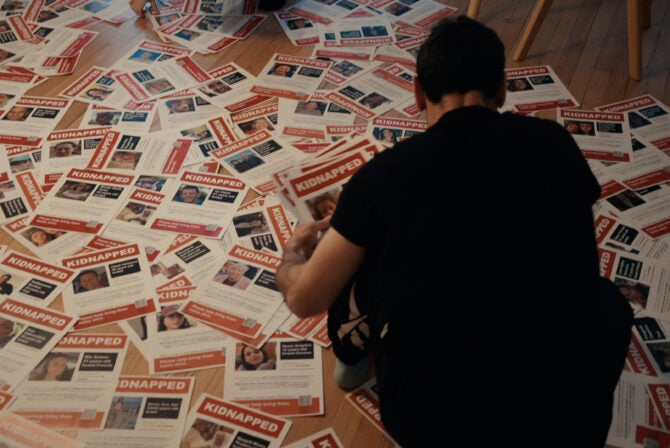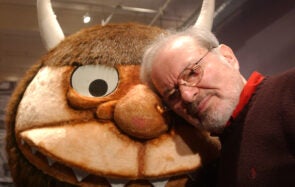A couple of weeks ago, I gave my 8-month-old daughter her first lovey—a little giraffe head attached to a small soft blanket body—which I put in her crib for her bedtime. This was a very big deal for me, because it means my baby is growing up, and getting to the age when she might benefit from a soft toy to snuggle. I certainly did when I was a child.
My white stuffed cat with a bell in her tail accompanied me to every day of kindergarten and first grade, slept with me at night, and even followed me to college. “Kitty” (as I so cleverly named her) had the stuffing snuggled out of her, and I loved the jingle right out of her bell. Kitty made me feel better when I was scared, and less alone when I missed my Mommy or Daddy or sister.
Loveys Make Tough Times Easier
It’s a good thing, too, because that’s just what loveys are designed to do. These “transitional” or “attachment” objects (as we social worky types like to call them) help comfort small children during stressful periods of growth and change. Between the ages of 6 months to a year, babies start to move around more, and this newfound independence can be incredibly anxiety-producing ( as in separation anxiety). Basically, babies start to figure out that they might actually be a different little person from their primary caregiver, and that’s pretty scary. Soft little loveys offer a concrete, predictable, snuggly source of comfort in a big, ever-changing world.
Jews are no strangers to transitional objects. The Stars of David, evil eyes, hamsas, and mezuzot we wear as jewelry not only hold historical and cultural meaning, but they also help us feel connected to our families, communities, and beliefs in times of doubt and insecurity. And no, we’re not worshipping false idols. The power of the necklace or blanket or teddy lies not in the object per se, but in its ability to keep us connected to the important relationships in our lives, those that soothe and calm us, and help us feel safe and protected.
If you feel like your little one might benefit from a lovey of his or her own, here are a few tips on getting started.
1. Follow your child’s lead. Some kids attach to the loveys right away, some take more time, and some may never settle on just one teddy. My older daughter is 2 ½, and she picks a different “special toy” every day or two.
2. Choose something small and replaceable. While you may not necessarily have control over which toy your child ultimately  attaches to, your life will be a lot easier if it’s not a giant teddy bear that requires a carseat of his own. Offer smaller toys that can easily fit into diaper bags or pockets. Also, as much as you might love the idea of your son snuggling up to that cozy blanket Bubbe knit for him, don’t do it. You’ll be kicking yourself the first time that blankie goes missing. Pick something generic, and get two or three of them. A good friend’s 3-year-old daughter is well aware that she has three or four lambies, and when one gets dirty, she just asks for a clean one. It’s brilliant.
attaches to, your life will be a lot easier if it’s not a giant teddy bear that requires a carseat of his own. Offer smaller toys that can easily fit into diaper bags or pockets. Also, as much as you might love the idea of your son snuggling up to that cozy blanket Bubbe knit for him, don’t do it. You’ll be kicking yourself the first time that blankie goes missing. Pick something generic, and get two or three of them. A good friend’s 3-year-old daughter is well aware that she has three or four lambies, and when one gets dirty, she just asks for a clean one. It’s brilliant.
3. Decide ahead of time what you can handle. If it’s going to stress you out to see your child carrying around a baby doll or snuggy blanket everywhere she goes, then set your limits ahead of time. If you would prefer to keep the lovey for bedtime, or if teddy isn’t allowed at daycare or preschool, that’s ok. Just talk to your little one about it ahead of time, and be consistent.
4. Don’t expect your child to share the lovey. There are just some toys that little ones can’t tolerate sharing, and while it might be ok to politely “help” your child share other beloved toys, don’t make him share the lovey. When your kids are still really young, you can help negotiate this with other kids and their parents, but with time, you can start to talk with your toddler about putting lovey away during playdates so she doesn’t have to share it.
5. Get over the gross factor. Your kid is going to chew on the lovey. And drool on it. And drop it, and spill on it. Yes, you can wash the thing, but it will never be often enough. At some point, you just need to deal with the nastiness of a well-loved lovey.
6. The lovey is a transitional object, not a carrot or a stick. Kids are comforted by attachment objects because they can rely on them during times of stress, which are precisely the times when you might be tempted to resort to bribery or punishment. That’s fine, but pick a different treat or toy if you must. Your child will have an easier time calming down from that monster tantrum if she can have a few minutes with her beloved lovey.
7. Don’t stress about taking it away as your child gets older. Unless you have some serious concerns that your child’s attachment to the lovey is somehow hindering development, don’t worry about it. He’ll lessen his connection to that nasty little shred of a blanket when he’s good and ready.
 8. If you’re looking for ways to start talking with your child about his or her lovey, here are some of my favorite children’s books on the subject:
8. If you’re looking for ways to start talking with your child about his or her lovey, here are some of my favorite children’s books on the subject:
The Velveteen Rabbit by Margery Williams is the classic story of a toy bunny that becomes “real” because of the love of his owner.
The Knuffle Bunny series by Mo Willems. This hilarious trilogy follows the adventures of young Trixie and her beloved “Knuffle Bunny.”
Something From Nothing by Phoebe Gilman is based on a Jewish folk tale. In this lovely story, Joseph’s grandfather makes him a blanket, which eventually becomes a vest, a tie, a handkerchief, and finally a button for Joseph.
Finally, if you’d like to add a Jewish twist to your baby’s lovey, check out Kveller’s toy guide—the stuffed Torahs are pretty adorable, but I think the plush Moses is my favorite!







